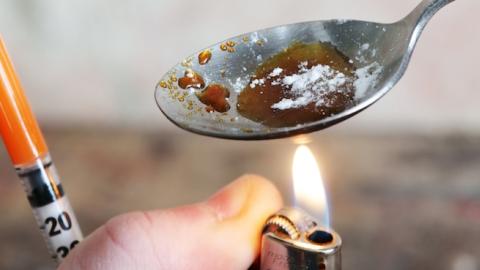The first year of the Obama administration, 3,278 people in the United States died of heroin overdoses. By 2014 (the most recent year for which there are statistics), that number had more than tripled, with 10,574 heroin deaths. Add to heroin the abuse of narcotic painkillers (analgesics such as oxycodone) and the epidemic is staggering: Opioid overdoses killed 29,400 Americans in 2014. The body count continues to rise because President Barack Obama does not have a serious strategy to address the problem.
Treatment has been the administration’s priority for dealing with drug abuse over the last seven years. The problem, we were told, was the lack of availability of treatment, a problem that was supposed to be solved by the Affordable Care Act. But it hasn't worked out. While traveling in New Mexico this month, the White House drug czar, Michael Botticelli, said that "across the country, I too often hear that people wait weeks or even months to get the [opioid] treatment they need."
Now the administration claims rising addiction and overdose deaths must be met with more federal funding for treatment—and that GOP hesitation to spend more money is to blame for the death toll. President Obama recently declared, "I am deeply disappointed that Republicans failed to provide any real resources for those seeking addiction treatment to get the care that they need."
But is the problem really a lack of funds?
The front-line federal drug treatment agency, the Substance Abuse and Mental Health Services Administration, already spends $1.8 billion a year on substance-abuse block grants that pay for publicly provided drug treatment. But that's hardly the only public money used for treatment: Millions are spent by the Veterans Health Administration, and treatment is also offered in prisons and jails. Nor should we forget the many millions spent for private treatment. And yet somehow this has not been enough.
In February, the president called for $1.1 billion in new, emergency spending on the opioid crisis, with "mandatory funding to help ensure that all Americans who want treatment can get the help that they need." And now, the White House argues that even this total of nearly $3 billion in requested funding is not enough to do the job. Could it be that the problem isn't in how much money is being spent but in correctly diagnosing the real treatment challenge? A central pillar of the administration's drug strategy was the Affordable Care Act. Among its mandates for expanded health insurance coverage are provisions for substance abuse treatment. The expectation was that Obamacare would be able to "create or enhance access to coverage for behavioral health services for 62 million Americans, nearly one-fifth of the nation's population." Yet that coverage has not materialized.
In August the White House announced "new funding" of $17 million to be spent in "high intensity drug trafficking areas." This adds to the $250 million already being spent in those areas this year. The new funding is supposed to be used for "public health-public safety partnerships" and a "Science to Action Coordinator." There will also be more money to distribute naloxone, the opioid overdose medication.
But the new $17 million request amounts to just $567 for every one of the nearly 30,000 opioid overdose deaths in 2014—and there are many more at risk today. Add up the estimated 914,000 heroin users and the 4.3 million nonmedical misusers of opioid pain medications, and the $17 million comes out to about $3.27 for every opioid misuser. This is not a serious proposal and it cannot halt the rising number of overdose deaths.
Even if the administration requested much greater treatment funding, it would still not reduce the crisis, because the overwhelming majority of the people in trouble aren't seeking treatment in the first place. According to the National Survey on Drug Use and Health, there were, in 2013 (the most recent year for which there is data), 20.2 million people 12 and older with unmet drug or alcohol treatment needs.
But of that population, less than 5 percent believed they needed treatment, and of that already small subset, only a third actually sought treatment. Of that group, a little over a third said they did not receive treatment because of "lack of insurance coverage and inability to afford the cost." Crunch the numbers and we find that lack of money or insurance was the stumbling block in getting treatment for less than 2 percent of those needing help. How much of a difference, then, will be made by spending more money on treatment, the solution offered by President Obama and his drug czar? Without effective outreach programs (including drug courts), without effective measures to reduce the exploding supply of heroin from Mexico, and without a serious effort to discourage drug use the death toll will continue to rise.
Too few of those who need treatment seek it. More funding won't solve the overdose and addiction problem when those at risk do not want the treatment they need. Motivating people to seek help is the critical need, which means rallying the nation to reach out to the addicted and direct them to treatment. Families, schools, health care institutions, workplaces, and the media can all encourage addicts to get help. And where that fails, the criminal justice system can require treatment.
But this change in policy will have to wait for a new president to take office, as President Obama's most significant drug policy achievement has been to make drug use more acceptable. A grim legacy of the Obama years is a drug abuse epidemic with tens of thousands of overdose deaths.



















